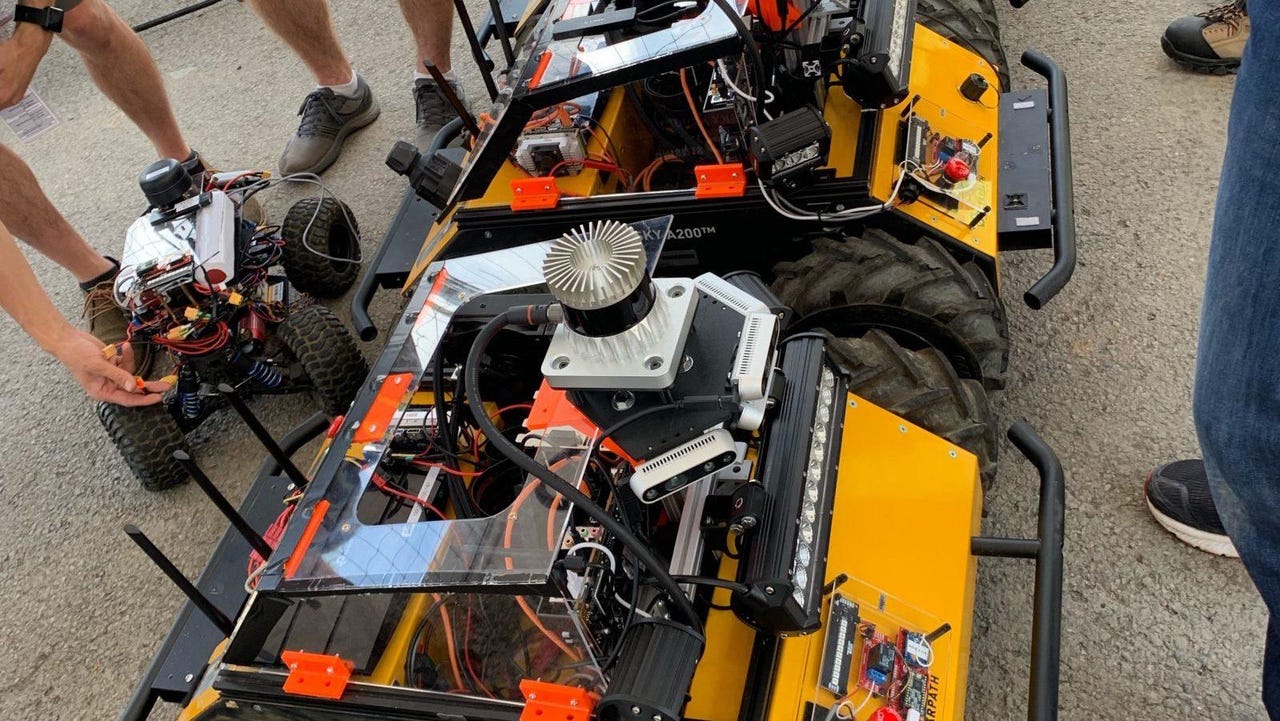This portable, high-bandwidth wireless network works underground


Networking
An old Pittsburgh mine is the improbable setting of an ongoing trial of some high tech hardware this week. Teams competing in DARPA's Subterranean Challenge (SubT) are sending robots into the gloomy depths of the mine for the challenge's Tunnel Circuit event, which wraps up August 22.
Through its latest robotics challenge, DARPA aims to "find novel approaches to rapidly map, navigate, and search underground environments during time-sensitive combat operations or disaster response scenarios." It's a tall order. Tunnels pose a particularly difficult problem for robots. Maneuverability and sensing can be difficult in cramped, dark, damp environments, for example.
But that's nothing compared to the biggest problem: communications.
"Underground communication is cutting edge. Nobody's solved the problem yet, and there are many unique challenges," says Chad Renick, an engineer from CU Denver in Pittsburgh for the Tunnel Circuit.
That's because tunnels bring limited line-of-sight, sharp turns, narrow passages, and airborne debris, which can cause signal loss, reverberation, and interference.
Engineers from CU Denver, part of an interdisciplinary SubT team called MARBLE, which also includes members from CU Boulder, are tackling the challenge with a novel communications network designed explicitly for the challenges of subterranean work.
MARBLE's solution designed to work with the team's small fleet of autonomous robotic drones, is a temporary, highly adaptable wireless mesh network that the robots deploy and can use to simultaneously map, navigate and search the mine's tunnels, identify artifacts, and communicate information to an above-ground relay station.
"We were tasked to design a new, robust and reliable communication system that could transfer significant amounts of data in real-time," says Mark Golkowski, professor of electrical engineering at CU Denver.
The CU Denver engineers rejected several iterations of radio technology, eventually lighting on radio hardware from Doodle Labs, an IoT company, that was small, powerful, compatible with robotics applications, and offered the multi-frequency capability. Doodle Labs became a sponsor, enabling the CU researchers to develop a system that offered superior connectivity to anything else they had tried with far fewer nodes.
"We designed our radios to enable cutting edge IoT applications in challenging environments, like the system CU Denver designed for the DARPA SubT Challenge," says Nimesh Parikh, CEO of Doodle Labs. "This is the deepest and furthest underground network deployed exclusively with Doodle Labs hardware."
The results of this stage of the SubT will be posted shortly, and we'll be following along through the 2021 conclusion of the challenge.